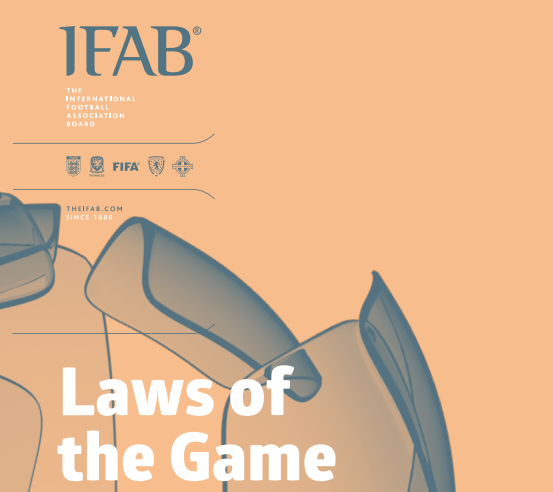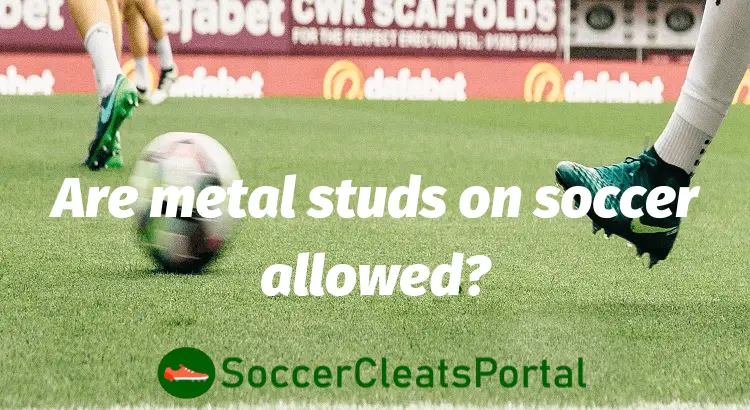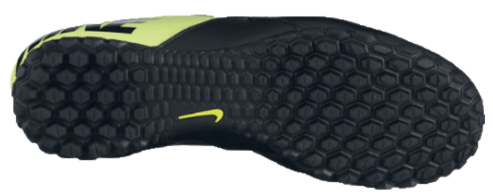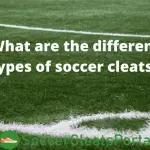Soccer cleats are specialized shoes with studs to grip into the ground and contribute traction to propel the player forward more quickly. On a soft surface such as grass, this can be immensely useful for increasing speed, control, and ability to launch off from a resting position. With cleats being a staple in the soccer uniforms, players often wonder about the safety of metal studs or question if metal studs are allowed at all.
Are metal studs on soccer cleats allowed? Here are the rules: As far as soccer played at the highest professional levels worldwide, metal studs are allowed and are indispensable when playing in certain weather conditions and on certain surfaces. College soccer rules in the U.S. expressly state that metal studs are allowed, while on the high school and recreational levels, they generally are not.
The issue of metal cleats in soccer boils down to weighing the benefits of enhanced performance and, to an extent, safety on the part of the player versus the potential danger that metal studs pose to other players during a hard challenge or slide tackle. In this article, we will turn to the actual rule books on soccer equipment and see that ultimately, it is the referee who has the final word.
Here Are the Rules Regarding Soccer Cleats
Soccer is the most popular sport in the world, with an estimated 4 billion people describing themselves as fans. Professional soccer (or association football) leagues are prevalent throughout Europe and the Americas and are growing by leaps and bounds in Asia. Although many of the world’s greatest soccer players come from South America, European nations such as Spain, Italy, France, Germany, and England have the professional soccer leagues with the greatest following.
European Rules Governing Soccer Equipment
 The highest governing authority when it comes to international soccer is the Fédération Internationale de Football Association, or FIFA for short. Concerning matches and equipment, FIFA adheres to the Laws of the Game (LOTG) put forth by the International Football Association Board (IFAB).
The highest governing authority when it comes to international soccer is the Fédération Internationale de Football Association, or FIFA for short. Concerning matches and equipment, FIFA adheres to the Laws of the Game (LOTG) put forth by the International Football Association Board (IFAB).
Law 04 pertains to players’ equipment and footwear; it states:
– A player must not use equipment or wear anything dangerous. (Section 1)
– Footwear is “compulsory equipment.” (Section 2)
This is the extent of any official regulation on the footwear worn by professional soccer players in Europe. No specific mention is made concerning cleats or studs. The only guidance provided by these rules is that any boots (as soccer shoes are commonly called), and presumably the studs attached to them, must not be “dangerous” per Section 1 of Law 04.
Also, the same law expressly requires the referee to inspect each player’s equipment before the start of each match to ensure that there are no violations:
“The players must be inspected before the start of the match and substitutes before they enter the field of play. If a player is wearing or using unauthorized or dangerous equipment or jewlery, the referee must order the player to:
- remove the item
- leave the field of play at the next stoppage if the player is unable or unwilling to comply
A player who refuses to comply or wears the item again must be cautioned.”
American Rules Governing Soccer Equipment
The governing body of both the national women’s (USWNT) and men’s soccer (USMNT) teams in the U.S. is the United States Soccer Federation (USSF). In Section 1 of its Bylaws, it is stated that “the ‘Laws of the Game’ as issued by the International Football Association Board apply to soccer games.” This being the case, metal studs are allowed on soccer cleats in soccer matches involving the USWNT and USMNT.
The National Collegiate Athletic Association (NCAA) is the governing body for collegiate athletics in the United States. Unlike The Laws of the Game, which governs FIFA and US competitions and is relatively silent on the issue, the NCAA’s official rules for soccer expressly allow metal cleats to be worn by NCAA soccer players.
Rule 4.1.17 states:
“Shoes shall be worn by all participants in a game. Shoes with soles containing aluminum, leather, rubber, nylon, or plastic cleats, studs or bars, whether molded as part of the sole or detachable, are allowed as long as the referee does not consider them dangerous.”
Again, the same operative word “dangerous” appears to be the only guidance as far as interpreting this rule.
Presumably, both the NCAA and FIFA/IFAB rules would forbid metal studs that have sharp or jagged edges that could potentially pose an unusually dangerous condition in the event of a hard challenge or slide tackle on an opposing player.
Under international rules and the NCAA’s rules regarding any equipment worn by players, the referee has absolute authority to determine whether a player’s equipment poses a danger to other players, and in the referee’s discretion, that player must rectify the nonconformity or run the risk of disqualification.
For extra confirmation, I would suggest that you read the instructions and directives on any given league you are playing. This is because, although they are accepted by the NCAA, they may not be accepted by your soccer league. There are children’s and junior leagues where metal cleats may not be allowed.
Why do soccer players wear metal cleats?
Being properly geared up is one of the fundamental tasks of every soccer player. The most important thing is to have footwear that’s adequate for the state of the pitch the game is played on. On soft and wet grounds, a large number of players opt to use metal studs on their cleats.
So, what do they gain by having these on the soles of their shoes?
- Increased Traction on Soft Ground
This is the main purpose of metal studs. They should provide players with more traction in wet natural grass fields. The studs are also heavily used in wet weather conditions. If this wasn’t the case, there would be a lot of sliding. Although metal studs look dangerous, in these conditions, they can prevent injuries by decreasing the number of unnecessary falls and collisions.
Professional soccer players are often wearing cleats with metal studs. They play on high-quality terrains with soft, fertilized grass. This means that their cleats penetrate deeper into the ground and the use of metal studs is a necessity. Amateur players will more often choose shoes with plastic studs as they are more versatile.
- They Are More Durable and Replaceable
Even though metal studs are more expensive than plastic ones, they should last more in most cases. They are made with strength and durability in mind. Also, once your metal studs get depleted, you can usually just replace them without changing the whole cleat pair. This should be the case for the majority of cleats that are in the mid and high-price range.
In comparison, plastic studs usually can’t be replaced. You have to change the whole shoe once it gets worn down. They are also more prone to getting damaged.
Are Metal Cleats Dangerous?
Soccer is a physical sport. Players are often engaging in duels and struggling for the possession of the ball. Running around while armed with metal spikes on the soles of your shoes could be potentially dangerous.
There are some pros and cons of using them and regulations tend to seek the middle ground. There are mainly two types of danger that come with using metal studs on your cleats.
- Hurting Other Players
There is always the danger of grazing or stabbing other players when wearing metal cleats. Sliding tackles can sometimes look very ugly if players aren’t careful. Reaching high for the ball or jumping are also risky situations here.
The danger level of metal studs is controlled and checked before every game by the referees. In the official soccer rules, it’s stated that any studs that look dangerous must be removed. All in all, in modern football, the danger of getting hurt by metal studs is lower than before. Of course, keep in mind that it’s important to still take care.
- Using Them on a Wrong Surface
Although this is the main reason for getting hurt by wearing metal cleats, this source of danger is often overlooked.
They are specifically meant to be used on soft ground surfaces. If you use them on firm ground or turf terrains, you can easily get an injury. Your knees and ankles will be under a lot of strain while running and stopping. The metal studs could potentially penetrate a bit too deep into the ground, and you won’t have enough flexibility to put your foot in a proper position. This can lead to some sprains or even damage the ligaments.
Also, you’ll be pounding on the solid ground with the metal studs without much cushion. After many repetitions, this could lead to injuries ranging from your hips to ankles.
Can You Wear Metal Cleats on Turf or Artificial Grass?
Just as with many other sports that are played on a playing field, soccer is played on a variety of surfaces. Most of the matches played in the top leagues th
There are circumstances where turf makes more sense for a playing field than natural grass. It is easier to care for as it does not require extensive watering, cutting, and fertilizing throughout the year. In locations or climates that are susceptible to harsh weather conditions, the turf will simply last longer and cost less in the long run.
As we have seen, FIFA’s policies (which are followed almost universally) regarding metal cleats on any surface leave it up to the referee to determine whether metal studs are dangerous. College rules in the U.S expressly state that metal studs are permissible on soccer boots. So the answer to the initial question is yes, you can wear metal cleats on turf. However, the next question is whether you should.
Reasons Why You Should Not Wear Metal Cleats on Turf or Artificial Grass
Turf surfaces can range from very inexpensive fields that amount to thin green carpet laid over concrete, to very sophisticated, artificial grass that closely mimics natural grass. Unless you are playing on the latter, the chances are that the turf you will be playing on will be relatively thin with minimal cushioning underneath.
You can visit my article about the differences between turf and artificial grass to learn more.
Reason No. 1 – Your Comfort
Soccer boots with metal studs have a very stiff and hard outsole, and the studs are typically the screw-in type for interchangeability. Most metal cleats are specifically made to be worn on natural grass, and often, wet and muddy grass at that. These are referred to as soft ground, or SG, boots, and they are made by all the top manufacturers.
The metal studs on SG boots are designed to penetrate the grass and dig into the underlying dirt for traction. It is said that during a typical soccer match, the average player runs the equivalent of 7 to 9 ½ miles. That is an incredible amount of running in proper shoes, but to do so in metal cleats on a hard surface could be extremely uncomfortable and lead to injury, which is our reason number two.
Reason No. 2 – Potential Injury
Two of the most common soccer injuries are related to ankles and knees. Sprained ankles and knees, or even ligament damage, can result from planting your foot in the ground and twisting your leg. Wearing proper footwear is only part of the solution; the specific boots you wear must be compatible with the surface on which you are playing.
In the case of turf, metal studs could seize in the surface, and not provide enough flex for your foot to pivot or release properly. Sudden stops or sharp changes in direction could result in injury. Besides, the pounding of the metal studs on a hard, ungiving turf with each step (mainly while in a full sprint) can result in injury from your feet up to your hip joints.
Reason No. 3 – Damage to the Playing Surface
Shoes that are specifically designed for playing on turf feature smaller, rubberized studs that cover the entire outsole. They are engineered to grip the shorter, flimsier blades of artificial grass and provide adequate traction. Metal cleats, on the other hand, are much larger and harder (most are made from aluminum) with absolutely no give.
As such, metal cleats can be damaging to turf surfaces, particularly with frequent exposure. The surface itself will wear out faster and, in some cases, with hard, jerky player movements, could even rupture or tear.
Soccer is played on many different surfaces and for every different pitch, you need a separate type of stud pattern. For more information, you can visit my article about the different types of soccer cleats.
In Conclusion
Today’s soccer shoes are engineering marvels. From the material used for the shoe to the pattern of the laces, to the design of the outsole and stud pattern, each shoe is designed to enhance a player’s level of play on virtually any surface, in any conditions.
If you are a football purist, and you play on natural grass fields in sunshine or rain, then your best bet is to invest in a pair of metal cleats. But in order to be sure, always check the league rulebook to confirm the acceptance of your favored cleat. Happy playing!




